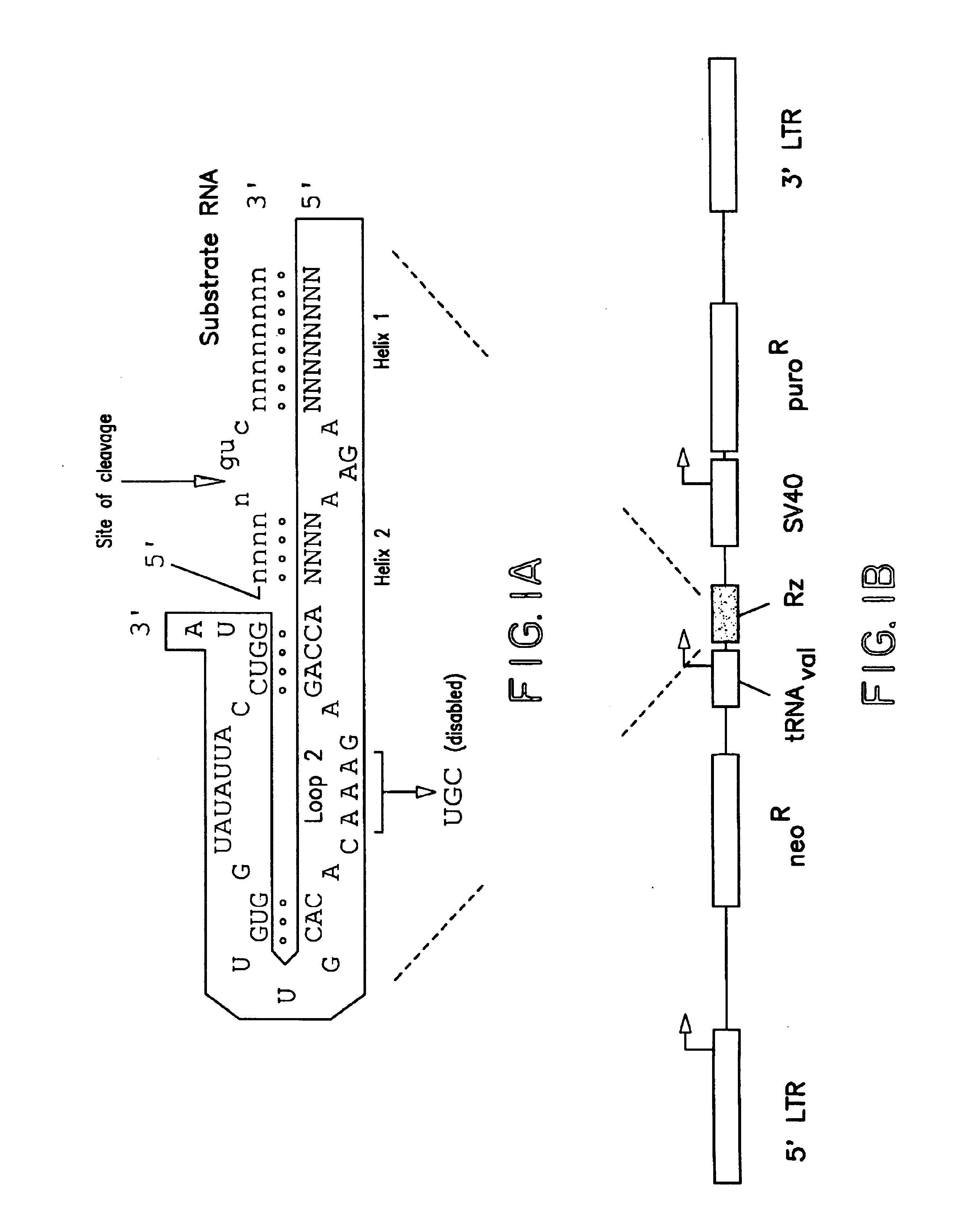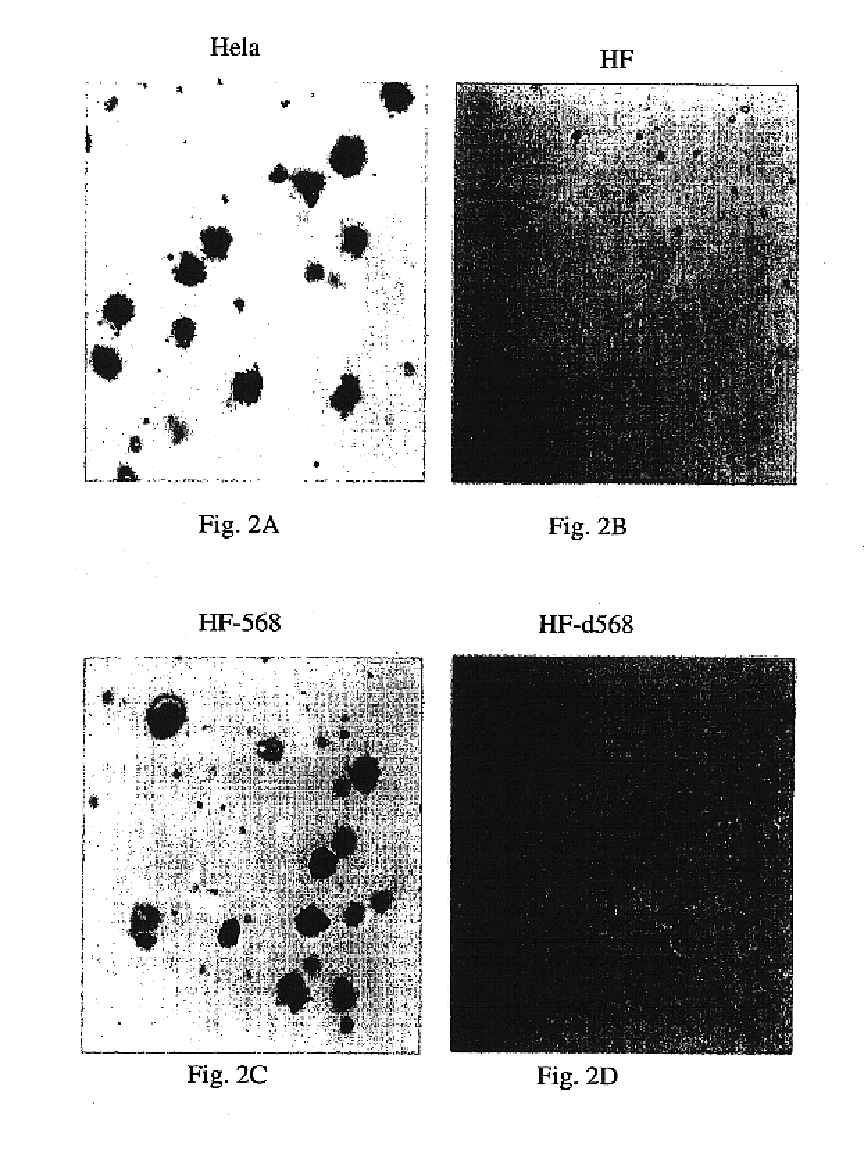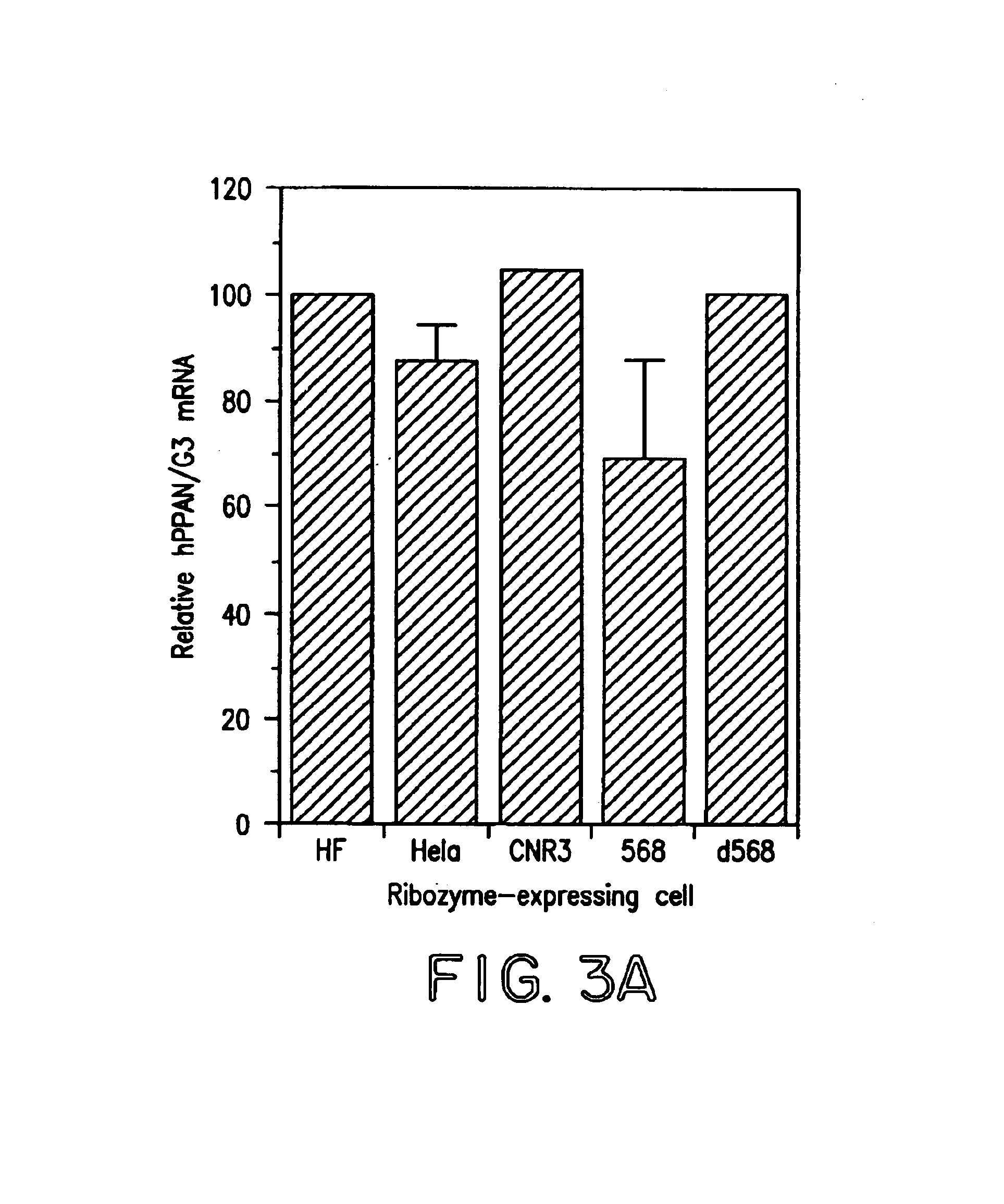Tumor suppressor molecules and methods of use
a tumor suppressor and nucleic acid technology, applied in the preparation of sugar derivatives, immunoglobulins against animals/humans, peptides, etc., can solve the problems of cell escape from normal growth regulation mechanisms and uncontrolled proliferation, and achieve the effect of inhibiting cell proliferation or unregulated cell proliferation
- Summary
- Abstract
- Description
- Claims
- Application Information
AI Technical Summary
Benefits of technology
Problems solved by technology
Method used
Image
Examples
example ii
Isolation and Characterization of Human Tumor Suppressor-1 (HTS1)
This example demonstrates the isolation of a full-length tumor suppressor nucleic acid molecule designated Human Tumor Suppressor-1 (HTS1) cDNA and its encoded polypeptide.
Since ribozymes recognize their cognate targets by sequence complementarity, the sequence of a ribozyme that causes a phenotype through its catalytic activity predicts a sequence tag that can be used to clone the target gene. This "Ribozyme Sequence Tag" or RST is 16 bases long, consisting of the two target binding arms (helix 1 and 2) and the requisite GUC in the target (FIG. 1A). The RST can thus be used to BLAST search the gene and EST databases, and also can be used as a primer for 3' and 5' RACE. BLASTS of the EST databases yielded several hits, mostly of genes with unknown function. None of the database hits appeared to be related to tumor suppression, cancer or anchorage-dependent growth.
In light of the absence of obvious database hits, the RZ...
example v
Validation of the Role of HTS1 (hPPAN) in Anchorage-dependent Growth
This example shows that knockdown of HTS1 mRNA by several different ribozymes promotes soft agar colony formation in HF cells, confirming that HTS1 is a tumor suppressor gene.
To confirm that the Rz 568-mediated knockdown of HTS1 (hPPAN) mRNA in HF cells was truly promoting soft agar growth, several other ribozymes were designed against other GUC sites within the hPPAN mRNA. Five "target validation" ribozyme sites were chosen within HTS1. TV 1, 2 and 3 were all located within 150 bases of the 568 Rz site where it was considered that the RNA secondary structure would be sufficiently open and available for cleavage. TV4 and 5 were chosen near the 5' end of the mRNA, at or before the ATG translation start site, which has been shown to often be accessible and vulnerable to ribozyme-mediated cleavage in vivo. A ribozyme targeting human immunodeficiency virus was used as a control.
The locations of the target validation rib...
example vi
Effect of Overexpression of HTS1
This example shows that overexpression of HTS1 prevents Hela cell growth.
If HTS1 (hPPAN) was indeed involved in preventing HF growth in soft agar, it was hypothesized that overexpression of HTS1 in transformed Hela cells should block their ability to grow in soft agar. To test this hypothesis, the wild type HTS1 and a frameshift mutant of HTS1 were expressed in both Hela and HF cells under the control of the CMV promoter. In this plasmid, the CMV transcript is designed to be bicistronic with the ECMV IRES initiating translation of the hygromycin resistance gene. Therefore, resistance to hygromycin indicates expression of HTS1 cDNA as well.
To create the frameshift (FS) mutant of HTS1, the unique BssHII site at nucleotide position 135 (amino acid 12) was digested and the overhanging ends were filled in with Klenow polymerase. The resulting blunt ends were re-ligated, thus shifting the coding frame by 1 base. The frameshift was verified by DNA sequencing...
PUM
| Property | Measurement | Unit |
|---|---|---|
| temperature | aaaaa | aaaaa |
| structure | aaaaa | aaaaa |
| Northern blot | aaaaa | aaaaa |
Abstract
Description
Claims
Application Information
 Login to View More
Login to View More - R&D
- Intellectual Property
- Life Sciences
- Materials
- Tech Scout
- Unparalleled Data Quality
- Higher Quality Content
- 60% Fewer Hallucinations
Browse by: Latest US Patents, China's latest patents, Technical Efficacy Thesaurus, Application Domain, Technology Topic, Popular Technical Reports.
© 2025 PatSnap. All rights reserved.Legal|Privacy policy|Modern Slavery Act Transparency Statement|Sitemap|About US| Contact US: help@patsnap.com



